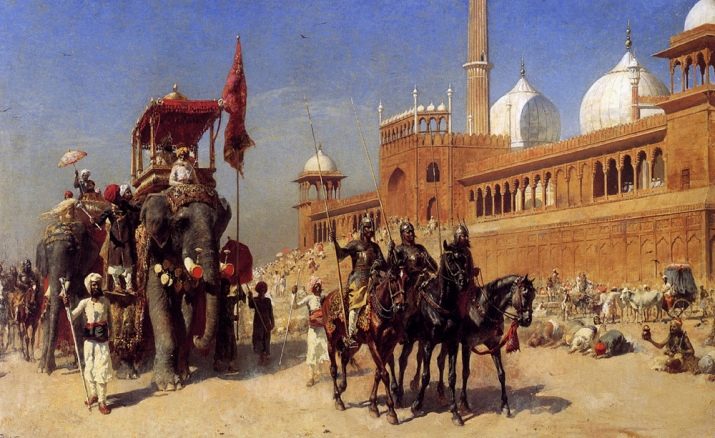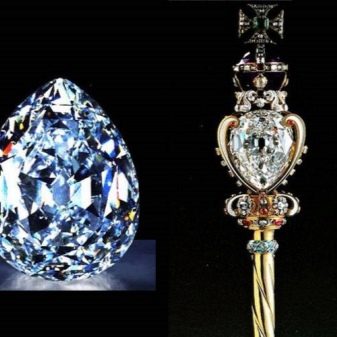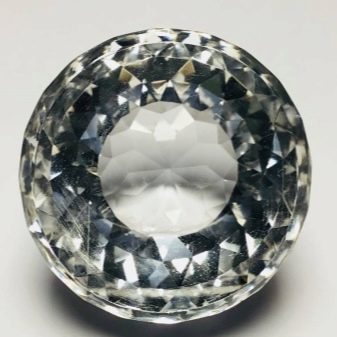Diamond "Great Mogul": features and history

The Great Mogul is the fourth largest diamond in existence. A complex and dramatic story brought the miracle stone from India to Persia, where information about it was lost in the 18th century. However, scientists and historians have not lost hope of finding the treasure.

Peculiarities
Since the middle of the 17th century, legends have circulated around the world about a diamond of incomparable beauty, which has not been equal for many centuries. Tragic and almost mystical events are associated with its appearance and disappearance. Some historians still find it difficult to believe that such a treasure actually existed. The famous stone called "The Great Mogul" was found in 1640 in the mines of Golconda, on the banks of the Krishna River.
The vast Indian deposit stretched in the Middle Ages as far as the Bay of Bengal. Next to it, the walls of the fortress, the citadel of the Sultanate, towered for many kilometers. Golconda is translated from the ancient Telugu language as a shepherd's hill. The unique deposit brought a huge income, the rajahs of the sultanate did not live like modest shepherds, but bathed in luxury.

It is known that until the 19th century, diamonds were mined mainly in India, from where they ended up in the noble courts of Asia and Europe. Marco Polo was the first to see this splendor at the end of the 13th century. He noticed that at the end of the rainy season on the coast, just underfoot among the pebbles, large diamonds are visible. The first description of the mineral "Great Mogul" was received from the French merchant Tavernier, who became a famous traveler. Tavernier studied Eastern countries, supplying stones to the court of Louis XIV.

Arriving for the sixth time in Hindustan, he reached the very south and visited the mines of Golconda.The illustrious Frenchman was invited to the court of the ruler of Aurangzeb in 1665 before returning to Europe, and he was one of the few Europeans who saw the diamond live. Tavernier, struck by the beauty of the crystal, described the jewel in detail.
According to the information contained in the notes of the merchant, the unique treasure resembled a tall and not very attractive, at first glance, bluish glowing rose with two subtle flaws - inside and on the lower edge. Then a similar description appeared in the Explanatory Dictionary of Sciences, Arts and Crafts, published since 1750. This publication, founded by Diderot, was considered authoritative in France, it collected information from connoisseurs and specialists of that time. Who could see the diamond is unknown but the philosopher cites a drawing in the encyclopedia that depicts a large cone-shaped rose.

Cutting history
Tavernier also testifies to the original weight and size of the diamond.
The original weight of the uncut jewel was 787 carats. The crystal was as big as a small ping-pong ball.
At that time, padishah Akbar established the unit of weight measurement - ratti or sorh (about 0.126 g). Therefore, it was easy to make a mistake, converting 900 ratti into the usual units - carats. From that moment on, there has been debate about how large the diamond really was, since for three and a half centuries it was considered the most grandiose found in nature.

Venetian diamond cutters worked at the court of the Great Mughals. The best of them, Master Hortensio Borges, was chosen as a specialist and set to work. After processing, the appearance of the treasure disappointed Shah Aurangzeb.
The story says that the reward of 10 thousand rupees was not paid to the master, since a small spot inside and a defect on the lower edge of the stone remained. In addition, the diamond, made in the shape of a rose according to the traditions of India, has finally decreased in size. Tavernier called its dimensions comparable to a half of a chicken egg, while the weight has decreased by almost half, having lost 500 carats. However, even after such processing, the diamond remained unsurpassed in size for several centuries.


The first owners of the diamond
After he was found in the mines, the stone was in the treasury of Raja Golconda. There are several versions as to how the crystal then got to the padishah of the Mughal Empire. The transfer took place through a servant - a treasurer who owned a jewelry store. Either the nobleman was the owner of the stone and tried to ingratiate himself with the ruler of the Empire, or he stole the jewel out of revenge, trying to punish his master for the offense.


One way or another, the diamond, rare in size and beauty, ended up in the hands of Shah Jahan, after whom he was named the "Great Mogul". The patron saint of arts, the padishah ordered to build for his wife the Taj Mahal mausoleum, a masterpiece of architectural art, and was revered as a great connoisseur of beauty. He knew a lot about gems, in his spare time he was fond of cutting stones. The son of the padishah, Aurangzeb, took the throne by force. He imprisoned his father in a fortress in Delhi, and brutally killed his older brothers and their heirs. The jewel was kept in the treasury of the Empire until about 1738.

Then the war with Persia began, the capital was conquered by Nadir Shah. The troops of the latter were taking out loot carts from India. All gems from the treasury have been stolen and appropriated. The precious "Mogul" came to the ruler of Persia and stayed with him. Shah did not part with the diamond. In 1747, Vladyka was killed, and from that moment on, the stone is considered to have disappeared.

Where did the "Great Mogul" disappear?
The fate of the world's fourth largest diamond has long been unknown. Experts could only guess where the Indian treasure had gone. Since the stone was still cracked after the first cut, it may have been reworked.This hypothesis seems to jewelers and historians the most probable of all available.
Two equally famous diamonds - "Orlov" and "Kohinur" - resemble the "Great Mogul" in weight and shape.
The English jeweler Stritter claimed that Orlov was the very stone. The turquoise mineral was found in the Kolur mines in the first half of the 18th century. Its original weight was 300 carats.


The cut is also the same - a tall pointed rose. Initially, both diamonds were called "Great Mogul" and were in the treasury of the Empire, in the possession of Shah Jahan. After reprocessing to improve the appearance, the diamond weighs less than 200 carats. He was also shown to Tavernier, and he was delighted with Orlov, describing this jewel in his notes.

Later, the diamond was placed inside the eye of a statue of Brahma, in a Hindu temple. During the Persian invasion, the treasure fell to Nadir Shah. Then, around 1767, it was acquired by the Armenian merchant Georgy Safras.
The diamond got its name after it ended up with the Russian Count Orlov.
The favorite of the Empress could afford to buy such a large stone, then he presented it to Catherine II. So the count tried to win her mercy again, giving a truly priceless treasure for the day of the angel. The crystal shone on the top of the queen's scepter in 1774, and in 1914 it was transferred to the Kremlin's Diamond Fund.


Stritter has carefully studied the history of both minerals. His version looked pretty convincing. Only the Orlov's carat weight is too different from the Great Mogul diamond. But this problem was solved by another expert, the scientist Fersman. The Russian specialist discovered an error in Tavernier's calculations. Fersman suggested using a different ratio between carats and ratti - 6: 10, while the French used the wrong one - 7: 8. With new proportions and detailed calculations, the scientist announced the identity of the stones. To date, no one has disputed his hypothesis.


"Koh-i-noor" originates from the mines of Golconda, and, according to legend, it is several thousand years old. The original weight is about 600 carats. The diamond adorned the headdress of the newborn son of the Sun God, reclining on the banks of the Yamuna River. The symbol of enlightenment, "Kohinur" was in the statue of the god Shiva, in the place of the third eye. The rajahs of the ancient Malwa state placed the treasure on a ceremonial turban. The crystal is mentioned in sources dating back to the XIV century.


When the jewel came to the Mughals, the Peacock Throne of gold was decorated with it. After the attack on the capital of the Empire, along with other looted treasures, "Mountain of Light" moved to Persia, from there to Afghanistan, then returned to his homeland. When India became a British colony, the stone was taken to London. In 1852, the crystal was re-cut.
The traditional shape was changed to a flatter one. As a result, the weight decreased significantly, leaving 110 carats instead of 190. The yellowish sheen disappeared, the diamond became pure white. Shining in the crown of Queen Elizabeth, the stone is in the Tower of London.


A number of experts are of the opinion that the Great Mogul, divided into two parts, gave birth to two other famous diamonds - Orlov and Kohinur, or one of them. Calculations are given, dates are compared, but there are weak points in each version. Therefore, it is likely that the real "Great Mogul" is hidden in a private collection, and one day its owner will show the diamond to the world.
Watch a video on the topic.








